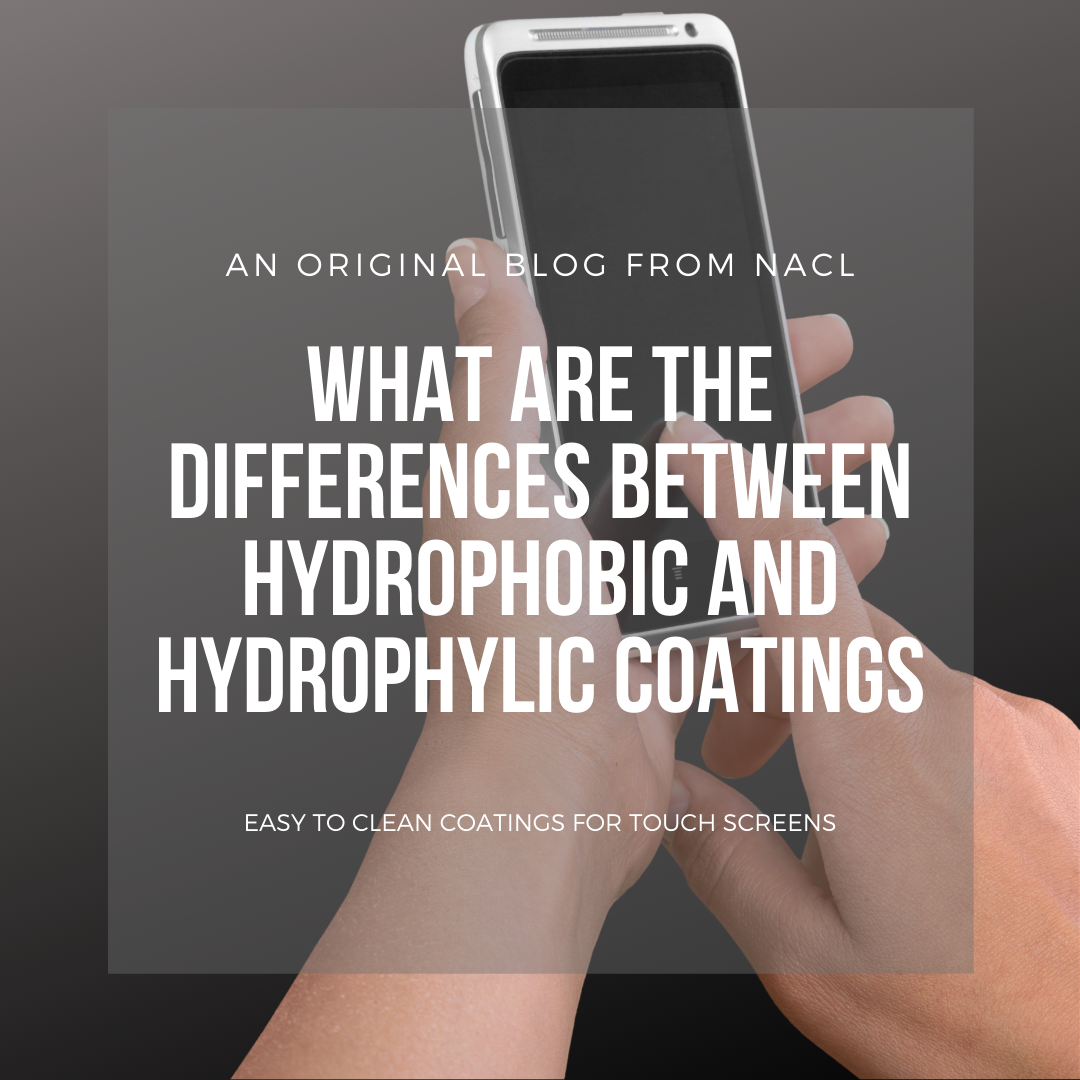What Are the Differences Between Hydrophobic and Hydrophilic Coatings?
With the explosion of touch-enabled displays in the consumer and corporate computing space hydrophobic or easy clean “anti-fingerprint” coatings have become increasingly more popular. The technical term for this type of coating is “hydrophobic” which should not be confused with “hydrophilic” This quick post should help outline the fundamental differences between the two coating solutions, and help you make an educated decision in which coating would be most beneficial for your program.
Hydrophobic Coatings
Hydrophobic coatings are water “fearing” coatings that utilize non-polar infused monomers that are introduced into plasma in order to repel water from a treated surface. Water droplets, and oils “bead” on the treated surface and roll to the edges. A perfect example of a hydrophobic coating would be Rain-X applied to a windshield. This treatment makes rain drops bead and roll off of your windscreen. The fundamental difference is that this product requires re-application whereas most hydrophobic coatings require only one application where a permanent chemical bond is created with the exit layer of the coated substrate.
Hydrophilic Coatings
Hydrophilic coatings are the opposite of hydrophobic coatings as they are water “loving”. With a surface prepared with a hydrophilic treatment, water will not bead up nearly as much as an untreated surface. When introduced to moisture, a hydrophilic treated surface will cause the moisture to spread out as a thin layer on the surface. This creates a much easier viewing condition. Many applications that need to have clarity for sensors or users benefit greatly from hydrophilic coatings which help improve the overall clarity of the optical surface.
How Do We Measure or Quantify?
There is no true accepted specification for hydrophobicity or hydrophilicity. The surest way to be sure you test the coating and understand what you are receiving is to measure contact angle. Hydrophobic coatings have a very high contact angle of >90° as beads of water repel from the surface. There is even a higher grade of hydrophobic coatings that are classified as super or ultra-hydrophobic. These coatings will achieve a contact angle of >115°. Hydrophilic coatings on the inverse attract water beads and have an extremely low contact angle of 10° or less. It is also important to find out if your hydrophilic coating will be water washable as some hydrophilic treatments are dissolved when washed with soapy water.
For more information on coating specifications, feel free to view our latest webinar with Photonics Media. If you have a project that may benefit from a hydrophobic coating, we’d love to chat more about your program! Talk to our experts to see if our coating solutions are a fit for your application. Please give us a call so we can help you with your decision as to which process is most beneficial for your program.






